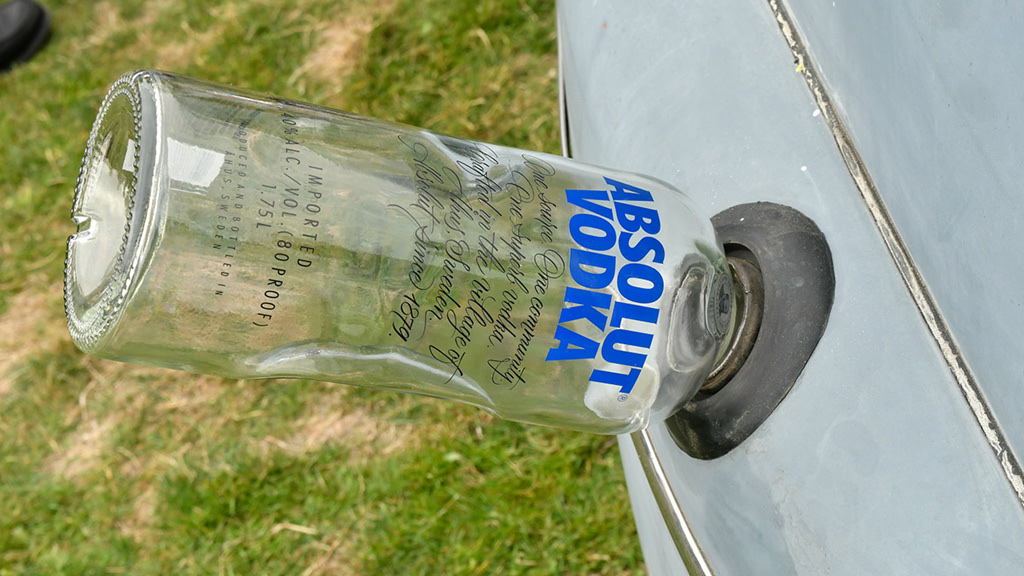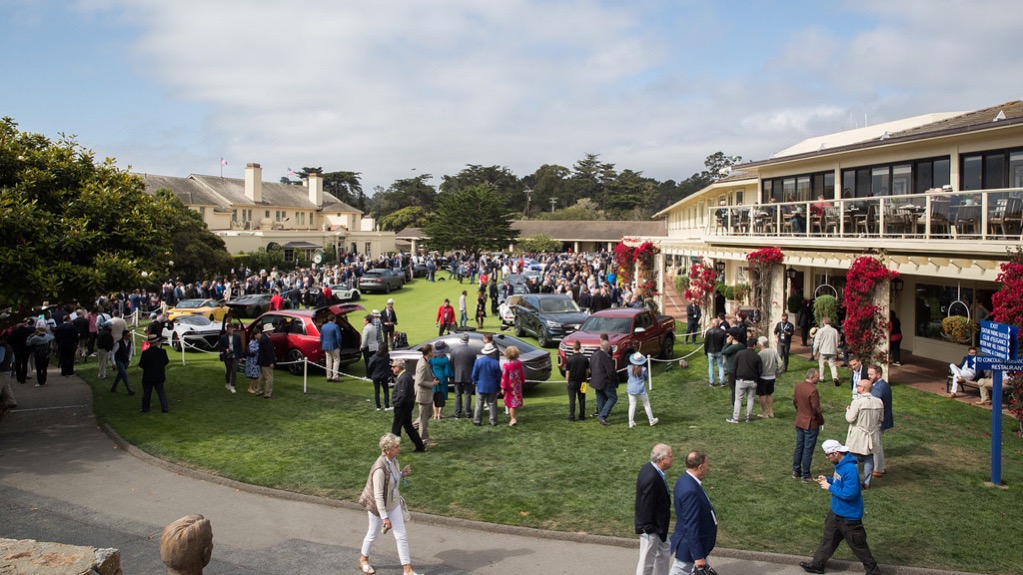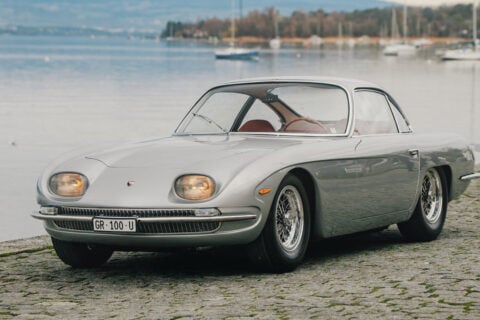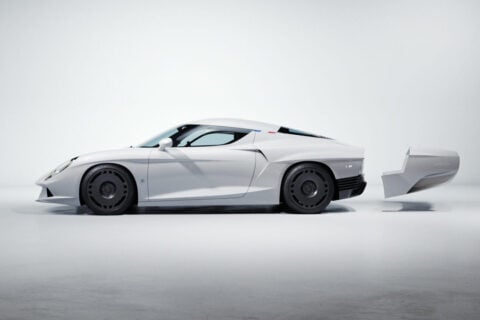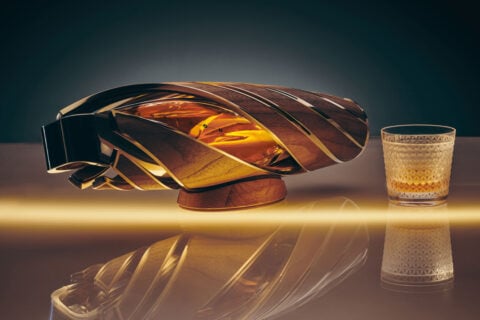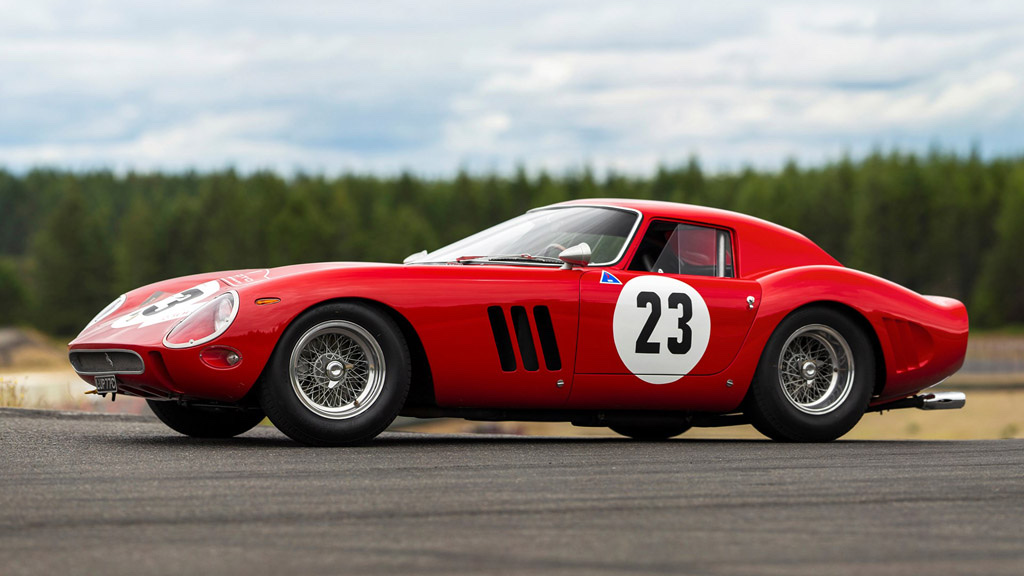
Ferrari 250 GTO auction
As the dust settles, what we’re talking about here is a new world record for a car sold in an auction. A 1962 Ferrari 250 GTO made $48.4m, $10m more than the sum paid for another GTO, auctioned by Bonhams in Monterey, back in 2014. Having found myself ring-side as lot 247 was eased onto the stage and introduced by former Ferrari factory driver Derek Bell, the showbiz that attends big US car auctions was displaced by a palpable air of anticipation. (One might even say there was a crackle of electricity, but that was probably caused by static from the carpet in the Portola Hotel’s giant conference room.) With the historic car world still reflecting on the sale of another 250 GTO earlier this year for a rumoured $70m, what would this one – currently owned by Greg Whitten, Microsoft’s employee number 15 – achieve?
It’s absurd to suggest that when the hammer came down, it was an anti-climax. But no-one in the room was in the frame, with the battle being fought between two telephone bidders. Perhaps people with this sort of money to spend prefer not to leave their citadels. Chassis no: 3413 is a storied car: the third of 36 GTOs, highly original, and an important player in Ferrari’s 1964 GT championship. Its body was upgraded by Scaglietti to Series II bodywork, a natural thing to do in period when Ferrari was constantly evolving its racing cars in pursuit of every advantage. Fifty-six years later, the idea that 500 people would be crammed into a room in Monterey watching it sell for $48m would have seemed ridiculous. As would the idea that it might have made $55m or even $60m if it hadn’t been upgraded…
I found myself sharing a lift with Shelby Myers, son of RM founder Rob Myers, later that evening. He was the man who’d been on the phone to the winning bidder a few hours earlier, and looked – perhaps understandably – exhausted. ‘Happy?’ I asked him. ‘$48m is a lot to pay for a car,’ he replied after a long pause. And it is.
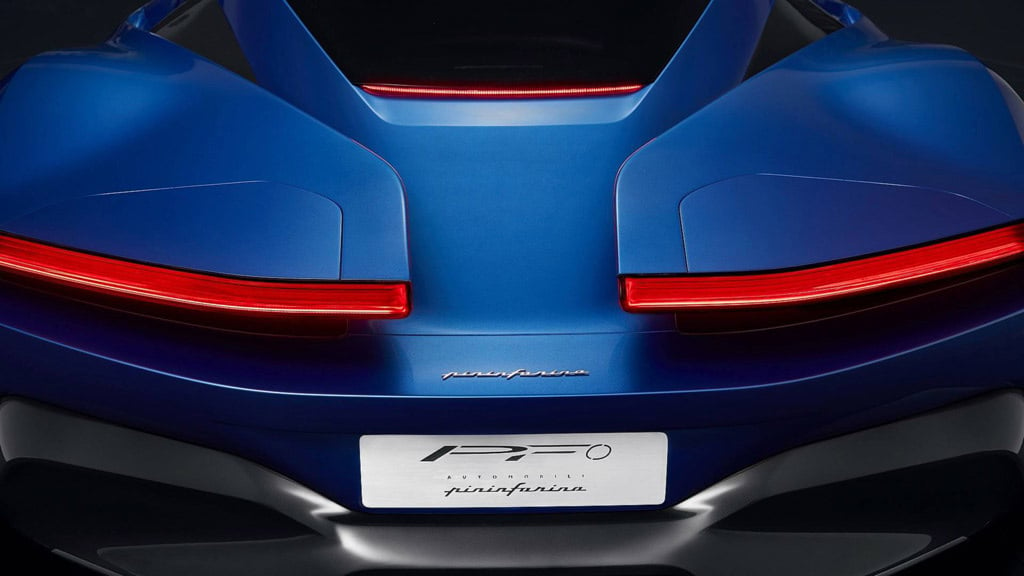
Pininfarina PF0
Pininfarina’s journey from designer – one of the greatest, across an 88-year history – to standalone car-maker is gathering momentum. The PF0 is yet to receive a name but a full-size maquette was installed in a stunning modernist house on 17 Mile Drive near Pebble Beach for prospective clients to ogle. We found out a little more about it, too. Pininfarina is targeting a power output of 1900bhp and 1700lb ft of torque, thanks to the presence of an electric motor on each wheel. That might/should/will translate to a top speed of 250mph, and a 0-62mph time of less than two seconds, which will make it easily the most powerful Italian sports car ever made. That’s something to mull over. Pininfarina Automobili promises a range of 300 miles on a full charge, though obviously not if you’re travelling at 250mph. Total production is now 150 units, up from the ‘less than 100’ that was mooted at the car’s reveal in April, from $2m. More interesting is where these guys are pitching the car: ‘Design is the key differentiator, and we think we have everything it takes to create a great object of desire,’ CEO Michael Perschke says. ‘It’s a piece of art, a very specific piece for your collection, like a Chateau Lafite-Rothschild. Design chief Luca Borgogno references sculpture. ‘How do you achieve Italianness in a car? It’s in the way it’s sculpted.’ Having worked on the ‘fuoriserie’ low-volume specials Pininfarina did with Ferrari, including the lovely Sergio, there are echoes of Prancing Horse in the PF0, but there’s also a sweeping new form language, particularly in the how the rear end is resolved. The interior is spectacular, ground-breaking in its form and use of materials. Naturally, Pininfarina plans to personalise each car, and the car’s character can be altered dramatically depending on colour and specification. In fact, I’d bank on this being the electrified hypercar worth sinking money into. Make your own mind up when it debuts at the Geneva show next March. But I’d still rather have the Cisitalia 202 Pininfarina designed in 1946, which set the template for pretty much all of its best work thereafter.
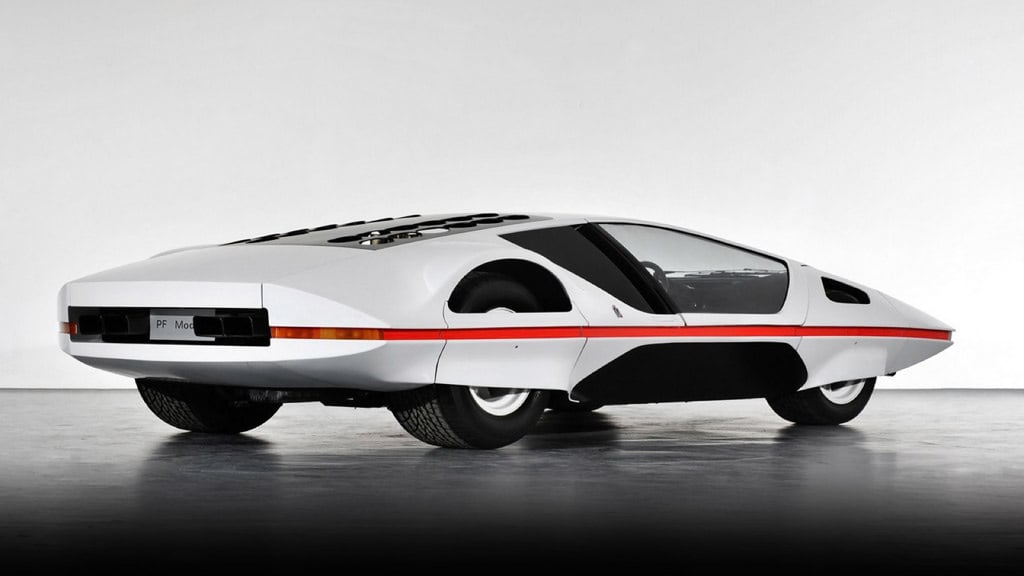
Pininfarina Modulo
Most car design bosses have a model or image of the Modulo somewhere. A 1970 Pininfarina concept that took the internals of the Ferrari 512S racing car and basically fired them into outer space, Paolo Martin’s design was sold by Pininfarina to Jim Glickenhaus in 2014. Things were looking a bit rocky financially, and the bosses wanted to ensure this genuinely iconic car ended up in sympathetic hands. Jim, who is busily growing his own car company, SCG, has recently got the Modulo running for the first time, and managed to give the decorous surroundings of Pebble Beach a solid blast of retro-futurism. ‘Here,’ he told me, while thrusting a sheaf of slightly bedraggled papers and hand-drawn sketches at me, ‘this is what the owner’s manual looks like…’
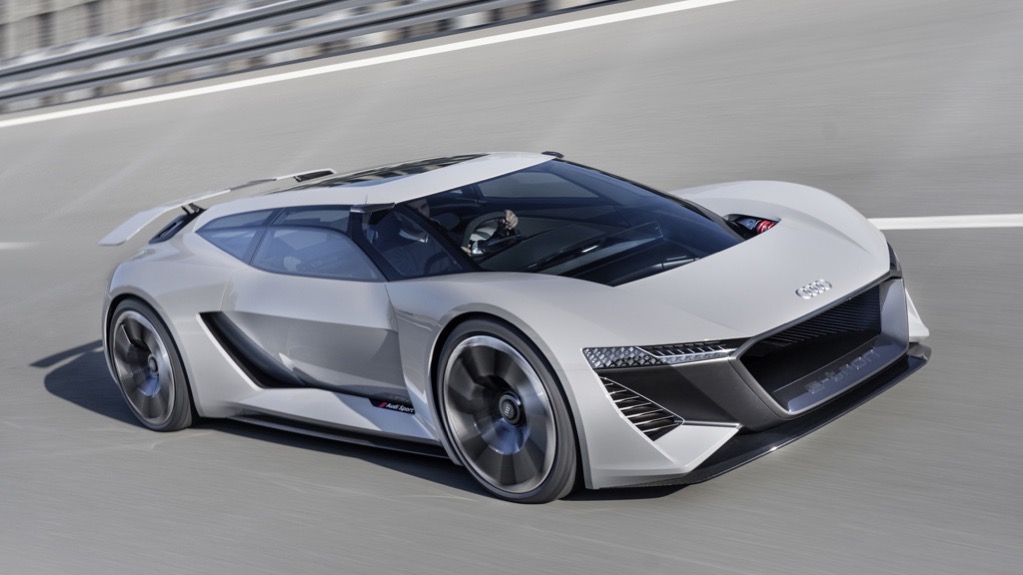
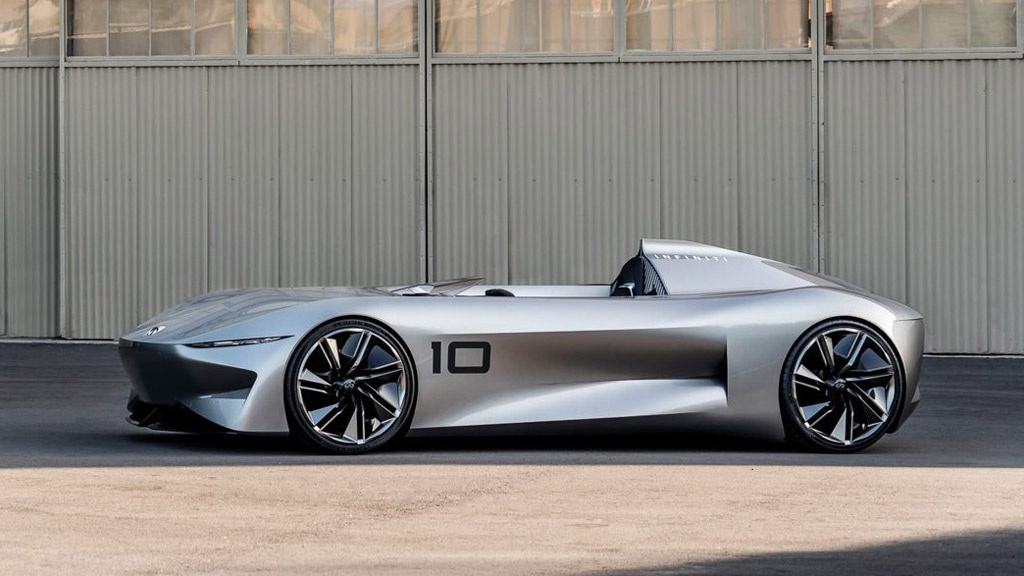
Concepts – Audi, Mercedes, Infiniti
Such is the worldwide lure of Pebble Beach – and the increasingly vibrant Quail Lodge gathering – that big OEMs now regularly create new concept cars specifically for it. Audi’s design, under the leadership of the talented and likeable Marc Lichte, is taking its time finding a fresh identity. But the PB18 e-tron joined the dots all the way back to the golden era that gave us cars like Bertone’s Alfa Romeo Carabo, the Maserati Boomerang, and indeed Pininfarina’s Modulo. Created by Audi’s new Malibu Design Loft – imagine the queue to get a gig working there – this too is a fully electric concept, but one you’d actively want to drive rather than lazily reaching for the autonomous button like one of the blimp-like humans in Pixar’s 2008 masterpiece (I)Wall-E(I). If you were to liken its exterior design to a next-gen R8 Breadvan, that would sound terrible, but it really works. The interior can be reconfigured depending on the number of occupants, but by-wire steering means the driver can sit centrally. Or move to the side. Infiniti’s Prototype 10 also shares the singular ‘monoposto’ seating position, and advances the overtly retro styling licks of last year’s lovely Prototype 9 into something more plausible. Elsewhere, Mercedes unveiled its 750bhp EQ Silver Arrow concept, which rewound 80 years to Rudolf Caracciola’s streamliner record-breaker, and also featured the monoposto layout. In other words, in an effort to make us all interested in full electrification, you have to wrap the batteries and motors in a body that riffs on something a gazillion years old. So much for the future, eh.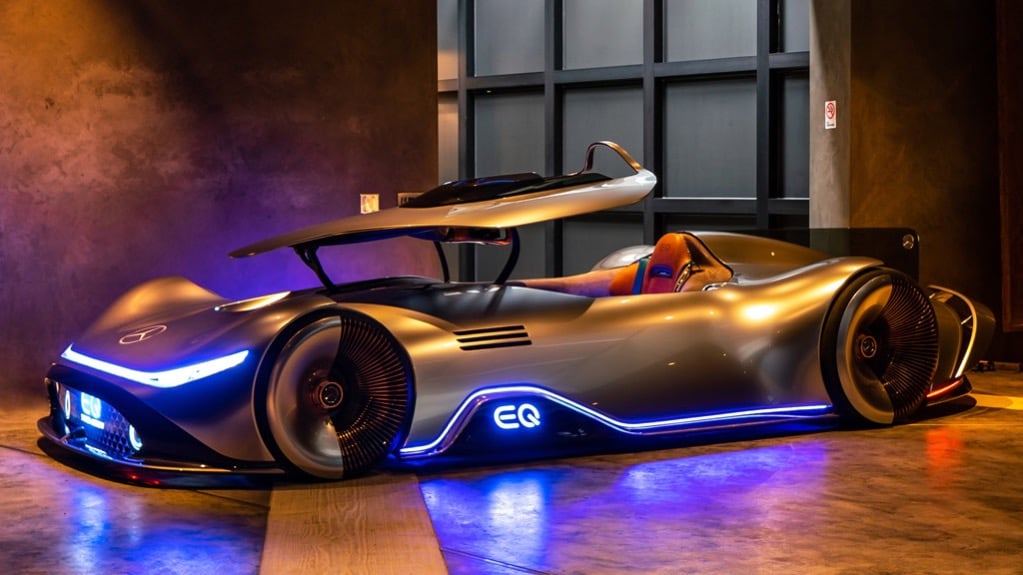
The cars you see around
Visitors to any of the most glamorous car shows or concours – Amelia Island, Goodwood FOS or Revival – will tell you that roaming the surrounding car parks is almost as much fun as the event itself. But as Pebble Beach is now the apogee of what has become a week-long celebration of automotive pulchritude – taking in various marque gatherings, the increasingly important Quail Gathering (dreamt up by billionaire Peninsula Hotel magnate, Sir Michael Kadoorie), Concorso Italiano (800 cars this year) and some great historic racing at Laguna Seca – the surrounding roads are teeming with classics. Too many to name, but special mention goes to the orange Seventies Alpina BMW 2002, the two LaFerraris that seemed inseparable, the Porsche 550 Spyder casually parked in Monterey, and the gentleman and his partner in the 1960 Ferrari 250 California GT Spider that we followed for 10 miles or so, in a Tesla Model 3. Right there are the bountiful extremes of California’s automotive subculture.
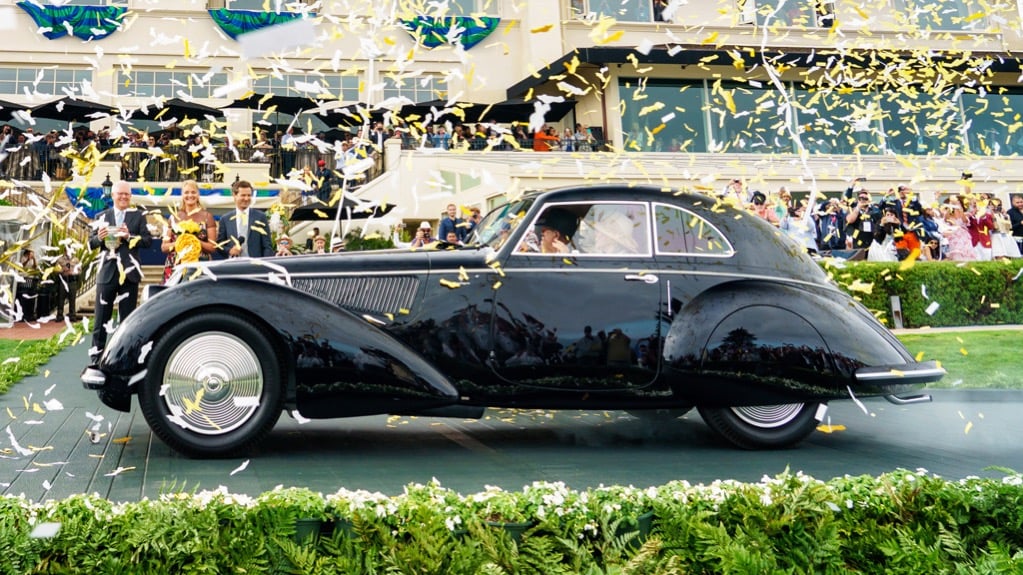
Pebble star cars
There are grumbles that Pebble Beach is simply too old-fashioned, and at least one major car designer of my acquaintance has had enough of the detail insanity bred by fanatical concours judges. If you keep an eye on trends and values in the historic car world, you’ll also know that the centre of gravity is shifting inexorably towards much younger cars: Pebble Beach has had just two post-war Best In Show winners in its entire 68-year history. This year’s overall winner, from the 200 assembled on the 18th fairway, stuck to the formula, but nobody with a working knowledge of the territory or any taste would begrudge David Sydorick’s 1937 Alfa Romeo 8C 2900B Touring Berlinetta its moment in the Californian sun. David, better known to me personally as an avid collector of Zagato-bodied cars, once let me borrow his exquisite Ferrari 250 GT Zagato, and it was good to see him. He’d just finished restoring the Alfa Romeo, he told me, and despite its pre-war status, there’s something about its voluptuary form that marks it out as genuinely timeless. Also short-listed for top honours was a Talbot-Lago T26 Grand Sport, with bodywork by those masters Figoni and Falaschi. That was a 1948 car, so it wasn’t going to win… But a 1937 Cadillac Series 90 Hartmann, powered by a V16, also bodied by Figoni and Falaschi, and owned by two-time winner Jim Peterson, also caught my eye. And everyone else’s.
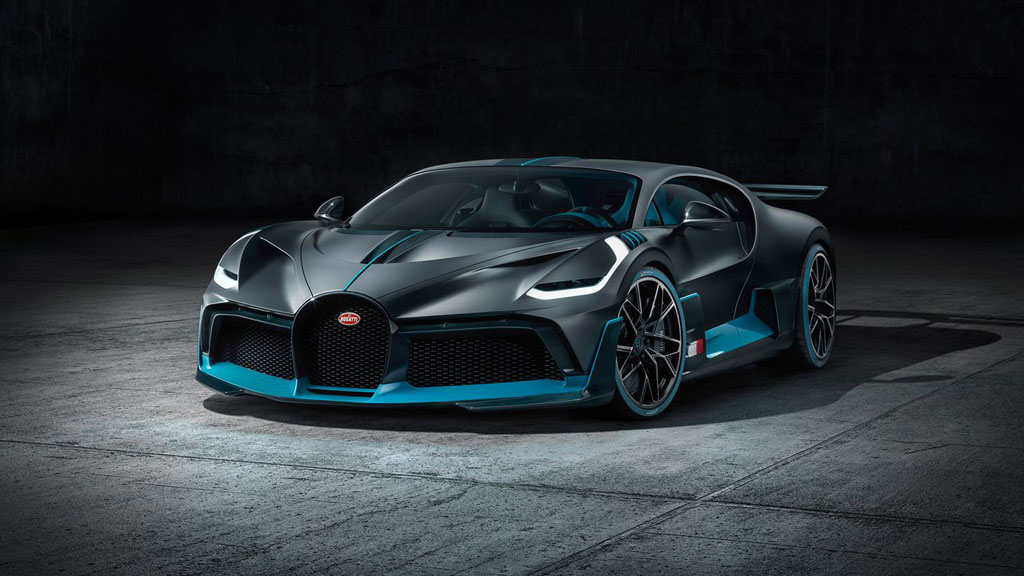
Bugatti Divo (in the flesh)
Two years ago, Bugatti surrounded the Chiron with about 25 Veyrons. This year’s show of force was decanted into one vehicle, but it’s quite a thing. The Divo is named after Albert Divo, a two-time winner in the Targa Florio (who’s next, I wonder… Vizcaya, or perhaps it’s time Bugatti honoured Elisabeth Junek), wrestling the focus away from warp speed straight line performance, and onto handling. It’s 35kg lighter than the Chiron, has 90kg more downforce (for a total of 456kg), and can pull 1.6g in lateral acceleration. There’s also 1.8m wide hydraulic rear wing, and there are stiffer springs, dampers, and anti-roll bars. It costs $5m-plus, and the 40 Bugatti is making have all been sold – despite the lucky few already being Chiron owners. That’ll help them cope with the disappointment that the Divo can only do 236mph (down from the Chiron’s 261mph, to protect the tyres because of the greater aero load).
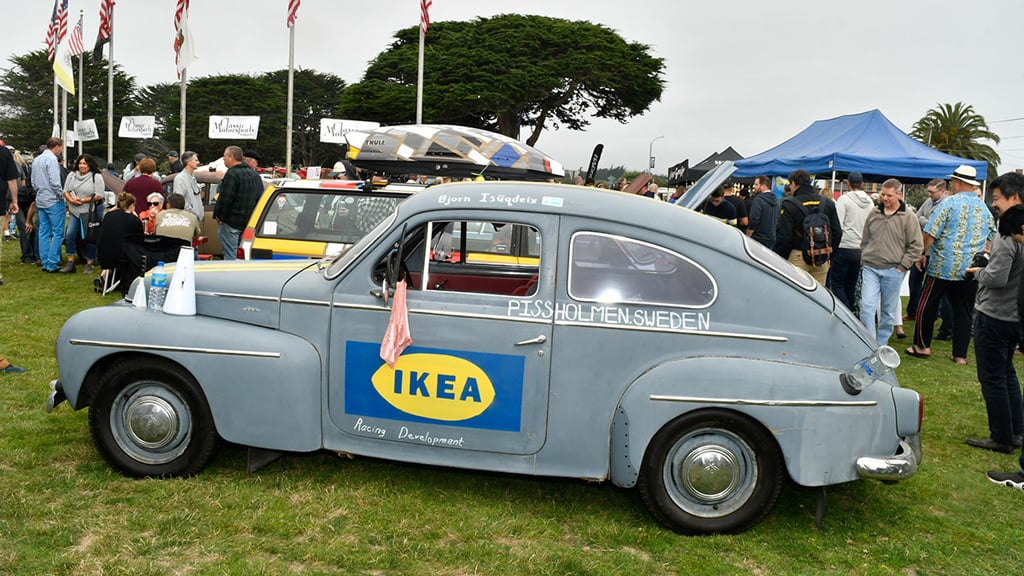
Concours de Lemons
A resolute antidote to the extravagant beauty elsewhere, the Lemons is an event that has found its own, decidedly esoteric groove. The cars are arranged into wilfully silly categories – Unmitigated Gaul, Needlessly Complex Italian – and are frequently horrible. Which is the point. The judges are also encouraged to accept bribes. But every year there are entries that test the boundaries of true automotive badness, and 2018 was no exception. Personally, I like the Volvo PV544, though perhaps not with an Absolut vodka bottle jammed in its fuel filler. There was also a Jaguar XJ-S, modified along the lines of (I)Mad Max(I) for duty in a US rally called the Gambler 500. I loved this thing – unironically. Equally, while Americans might struggle to understand the Citroen 2CV – or indeed Citroen full-stop – this a talismanic car in Europe.
No, really.
